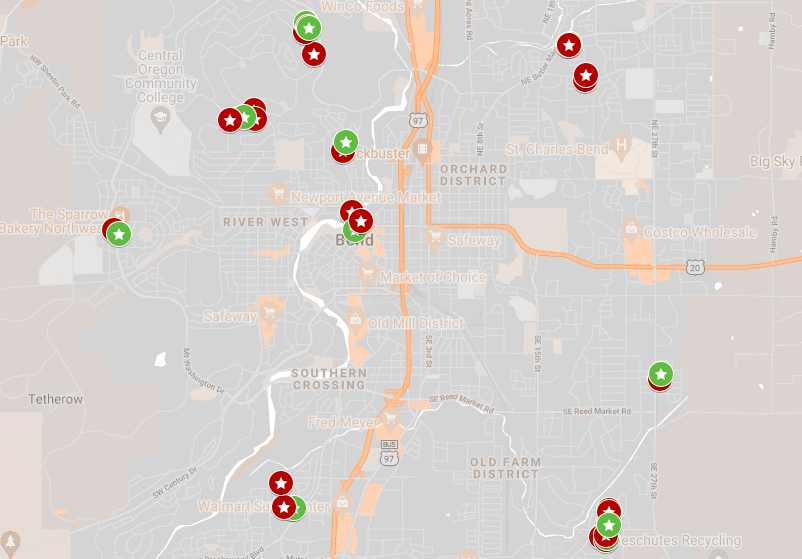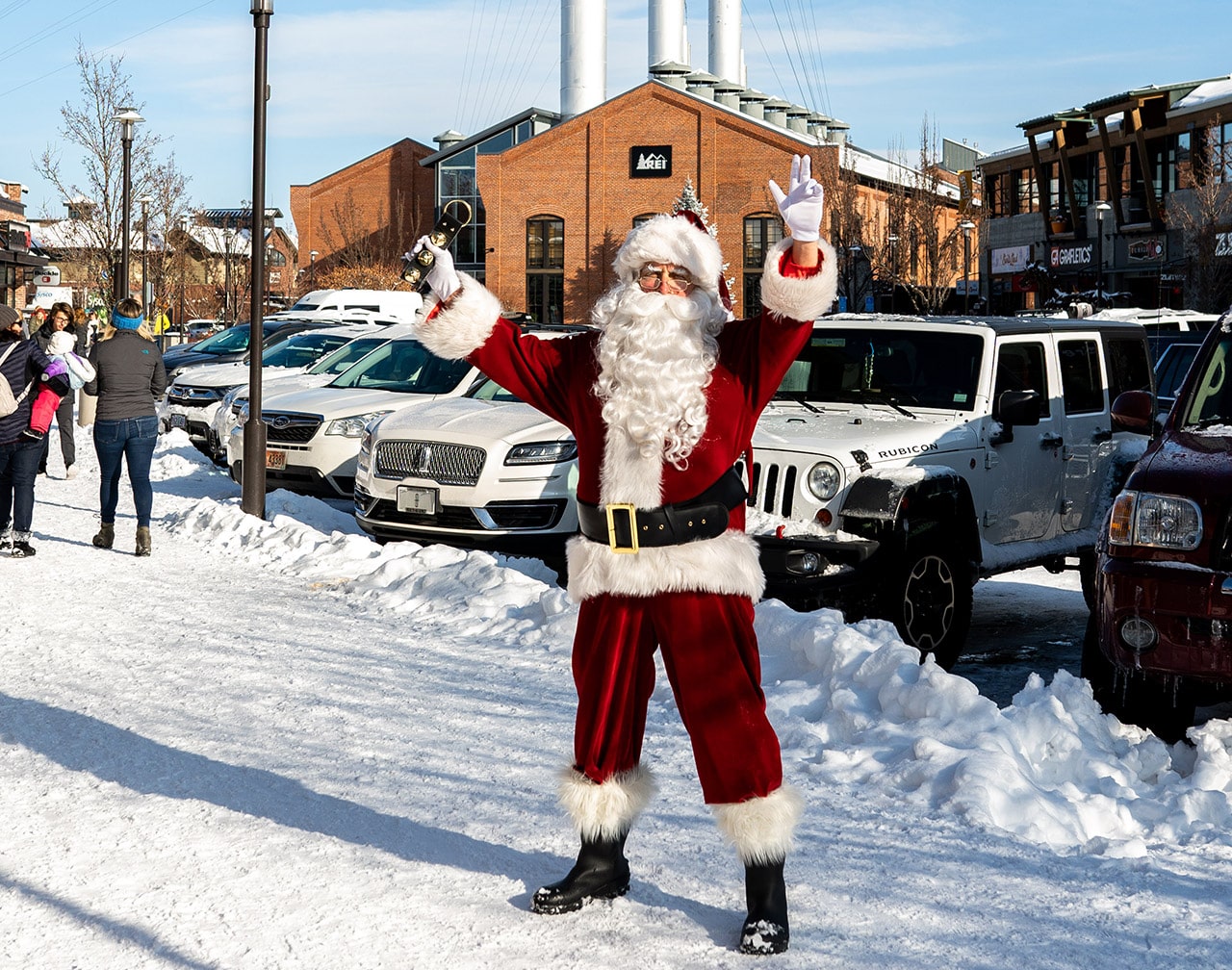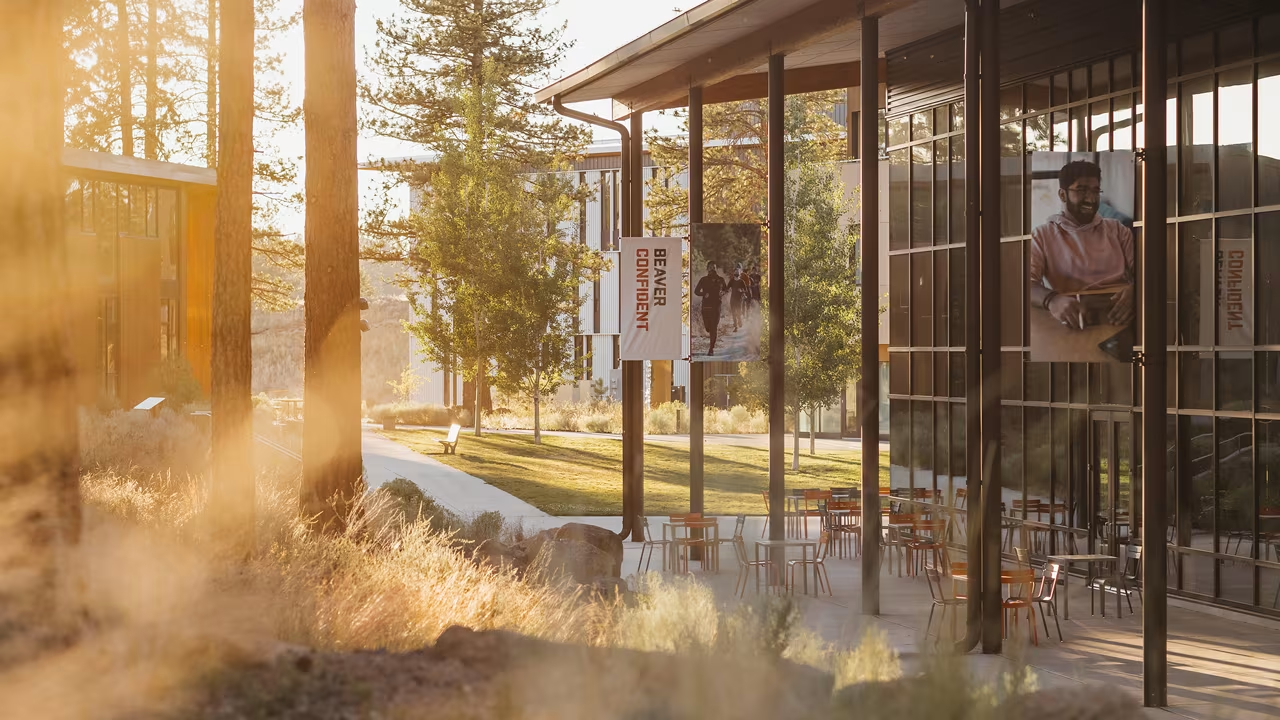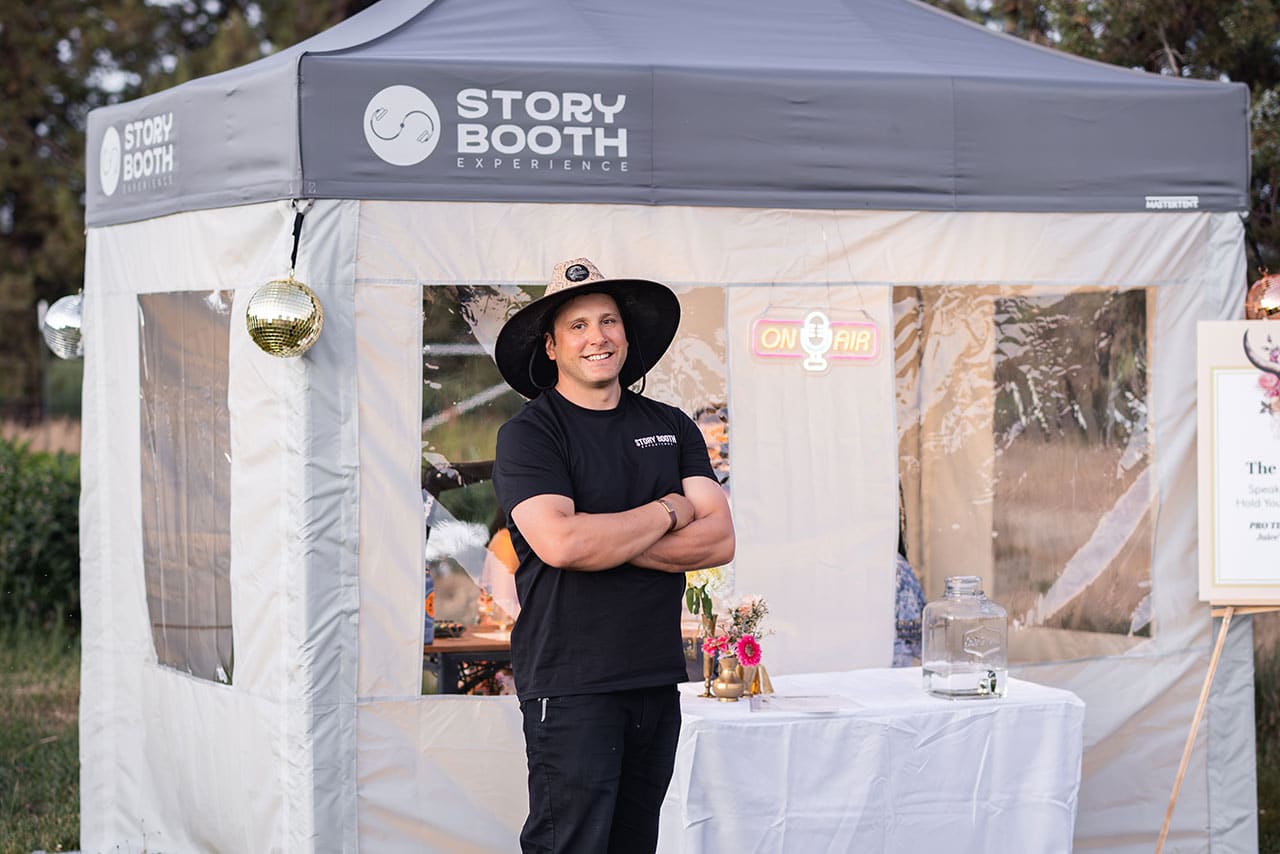In an adrenaline-fueled community like Bend, talented and passionate skiers run rampant. Every four years when the winter Olympics arrive, a few hometown athletes step into the spotlight to compete at the highest level. For all of Bend’s Olympians—past, present and future—the Olympics mean years of grueling training through every kind of weather, building support from a wide community network and keeping a laser focus on the end goal. What stokes their fire and makes it all worthwhile? Bend’s top winter athletes, fierce competitors all, share their Olympic journeys.
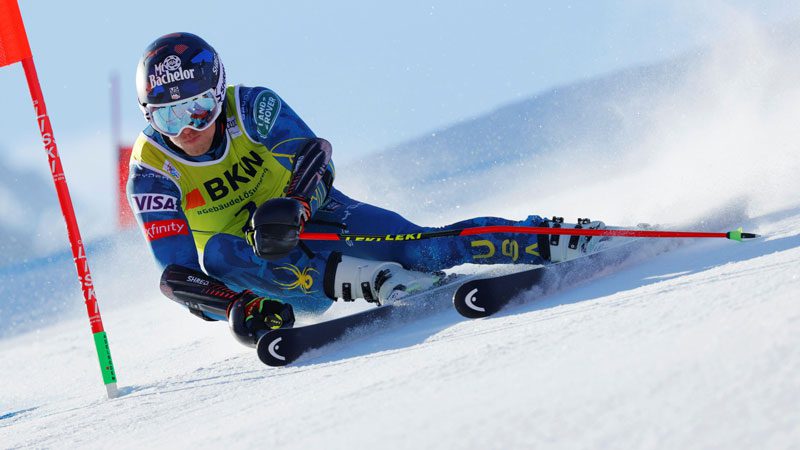
Finding Balance: Laurenne Ross and Tommy Ford
Every athlete experiences unforgettable moments in their career. For Laurenne Ross, one of those moments took place at the starting gates of an Olympic downhill racecourse, on a mountain near Sochi, Russia. “It was a quiet like I’d never experienced. Race starts are usually chaotic and noisy, but this was pure silence—like I was all alone in this magical, silent bubble,” said Ross.
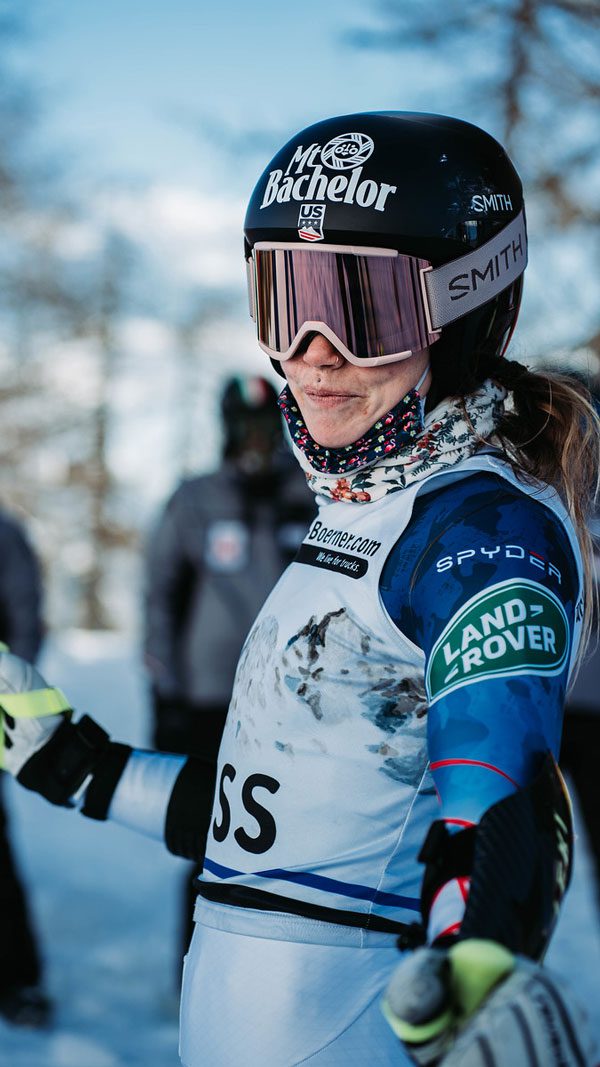
For Ross, that memory stands in contrast to another unforgettable Olympic moment: joining the entire Team USA for the opening ceremonies. “The ceremonies were crazy cool. Walking in together, not just skiers but with bobsledders and hockey players—made me realize I was part of something bigger. Especially because skiing is an individual sport, it was a powerful moment,” she said.
Ross grew up skiing on Mt. Bachelor. At age 14 she got serious about ski racing on the Mt. Bachelor Ski Education Foundation (MBSEF) team. Now at age 32, she is a veteran of several World Championship and World Cup races, as well as two Olympic Games, including the 2014 Sochi games and the 2018 games held in PyeongChang, South Korea. She’s retiring from ski racing this year—a bittersweet decision. Stepping back from ski racing allows her to focus on other lifelong passions and find a deeper perspective on ski racing.
“No matter how many medals you win, they’ll never be enough if you don’t find joy in the process. We tend to judge our success by the wins, but ultimately skiing is about passion and flow, finding joy outside in the mountains with your community,” she reflected.
Bend skier Tommy Ford has also competed in two Olympics, including the 2010 games in British Columbia and the 2018 games in PyeongChang. He sees the Olympics as more than a set of races. “The community of athletes that come together is something found nowhere else. But the games in PyeongChang did more than that—they sparked talks between South and North Korea, bringing those countries together,” said Ford.
Ford launched into ski racing with MBSEF at age seven, joined the US Alpine Ski Team at age 20, and now at age 32 is among the best giant slalom (GS) racers in the world. Following the South Korea games, Ford earned three podium finishes during the 2019-2020 season at World Cup GS races in Colorado, Italy and Japan. Ford’s subsequent season was cut short after a serious crash at the World Cup GS race in Switzerland, in January 2021.
Since that time, Ford has channeled his determination and energy into recovering from injuries left from that crash. “It’s been almost a year of rehab for knee strength, hand movement and functional neurology. I’m chipping away at it and feeling stronger—hoping to get back on the snow in the next few weeks,” said Ford.
Will Ford be able to race this season? It’s a question he can’t answer yet. Like every skier shooting for a chance to compete in Beijing, earning a spot on the US Olympic alpine team depends on the race results from the whole season, and on current rankings with the International Ski Federation (FIS). Final determinations are often made in late January, just weeks before the Olympic games begin.
For now, Ford is focusing on building strength and balance. He credits Bend’s strong culture of outdoor pursuits for the wealth of sports injury experts in Central Oregon. Guided by therapists and health professionals at Rebound Physical Therapy, Boss Sports Performance, Tumalo Wellness and Desert Lotus, Ford expects to shift from recovery back to race training.
“I’m taking on more training day by day but keep listening to my body. I’m not thinking too far ahead,” said Ford.
Be the Last to Leave: Hunter Hess
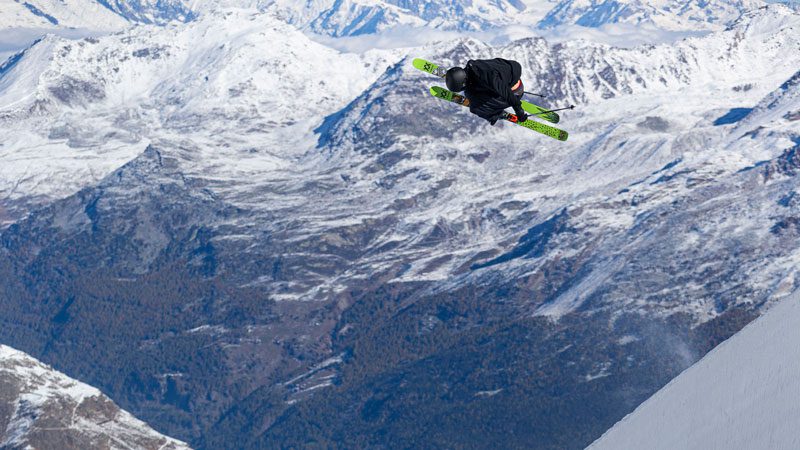
Ask any avid halfpipe fan about Hunter Hess, and you’ll probably hear about his signature trick: the triple cork 1,620-degree. This past July, Hess was the first halfpipe skier to land this trick, which involves four and a half full rotations.
At age 23, Hess has been a member of the US Ski Team for almost six years. He’s on the freeski team, which includes halfpipe and slopestyle skiers. Growing up in Bend, he was surrounded by ski culture—watching ski films at the Tower Theater and making Mt. Bachelor’s terrain park his playground. “I fell in love with freeskiing long before it was an Olympic sport,” he said.
Hess has already stood on the podium at the Genting Snow Park, site of the Beijing Olympic freeski competition. That was in 2018, when he placed third at the China World Cup. Returning to Beijing as part of the Olympic team would feel different, according to Hess. “The Olympics let you show the world what you can do. For me, it’s not just representing my country, but the community I come from—my family and coaches that got me here,” he said.
Community support is critical for competitive skiers, but persistence and dedication are the keys, said Hess. “It’s weird to even call it work because skiing is so enjoyable. But for halfpipe, there’s no chairlift. We hike back up after every run, again and again. In bad weather, when you’re tired, you have to outlive everyone else if you want to progress. That means start early and be the last to leave.”
Ski Fast and Have Fun: Ravi Drugan
Three weeks after the closing ceremonies for the traditional Olympics, the competition fires up again with the Paralympic Winter Games, the top-tier event for athletes with disabilities. The 2022 Beijing Paralympics will be the largest to date, with more than 700 athletes competing in 78 medal events. Alpine racing events include downhill, slalom, giant slalom and super-G, held on the same courses used in the Olympic games.
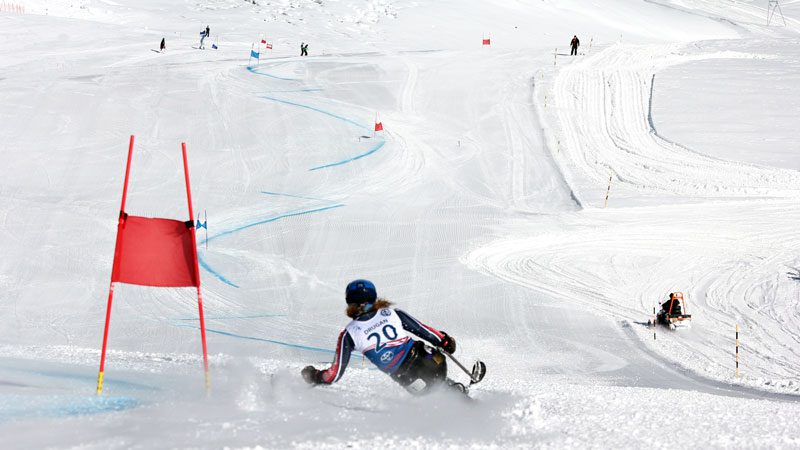
Ravi Drugan, age 32, has been a member of the US Paralympic National Team for three seasons, and trains year-round with the team. This year, he’ll compete in the slalom and super-G races in Beijing. “Being on this team is an honor, and the Paralympics take it to a new level. But just like every other race, I plan to ski as fast as I possibly can and hopefully have a lot of fun with it,” he said.
As a sit skier, Drugan uses a high-performance DynAccess monoski, which clicks into the same binding and ski that a stand-up skier would use. While most international ski racers focus on one discipline, Drugan mixes it up. In addition to downhill events, he competes in Monoski X at the X Games in Aspen—winning a bronze in 2015. Monoski X is a skier-cross event with four sit-ski racers on the course at a time, navigating rolling jumps and banked turns.
“I’m a freeskier at heart, but I do love the finesse and challenge of alpine racing. There is no better way to judge yourself than to be up against the best skiers in the world, racing the exact same course with dictated turns. You have to get comfortable with pushing your skiing right to the edge,” said Drugan.
Drugan now lives in Bend, but he grew up in Eugene. At age 14 he survived being hit by a train but lost both legs above the knees from the injuries. Five years later, he learned to monoski at Hoodoo Mountain, with the help of Oregon Adaptive Sports (OAS). “Without OAS, I wouldn’t be the skier that I am; I wouldn’t be here today. They’ve been my biggest supporters, and I’ll always support them in return,” he said.
Visualize Success: Dominic & Sebastian Bowler

“I like to picture walking through the Olympic village, skis over my shoulder, surrounded by people from all over the world,” said Dominic Bowler. Dominic and his brother, Sebastian, plan to compete in Beijing this February. Instead of skiing with the US team, they’ll be skiing for Brazil—their mother is Brazilian, and the brothers hold dual citizenship. Both brothers juggle ski training with academics: Dominic, age 20, is a student at Sierra Nevada College, and Sebastian, age 17, is a senior at Summit High School in Bend.
The Bowler brothers grew up in Bend, skiing at Mt. Bachelor. “Like most Bend kids, we learned to love skiing jumps in Dilly Dally Alley,” said Dominic. From there they progressed to terrain parks and began training with MBSEF.
Both skiers prefer slopestyle, but to fill team allocations one of them will compete in halfpipe. Each event has unique challenges, said Sebastian. They’ve trained far less in the halfpipe, but every halfpipe is structurally similar. Slopestyle courses are each unique. “Skiers get a four-hour window to learn that course and plan where to fit in tricks,” he explained.
Rather than feeling competitive with each other’s successes, the brothers agree that learning together made them both better skiers. When one learned a new trick, he’d teach the other. “We’d break the trick down into parts, then build it back up step by step,” explained Dominic. “There’s no one I like to ski with more than my brother,” he added.
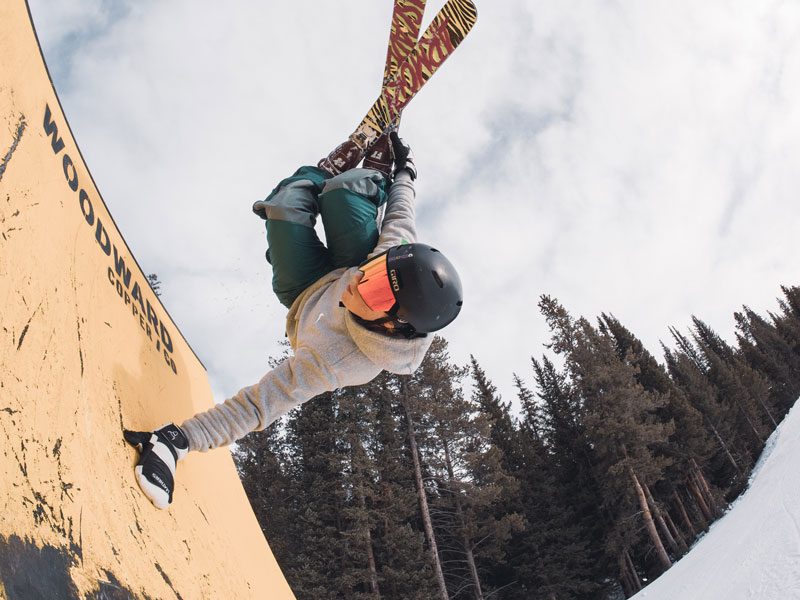
Breaking down a spinning aerial trick into parts is just part of the freeskiing equation—developing spatial awareness for landing is critical. For Sebastian, it’s a matter of repetition. “The more time you spend in the air, spinning, the better you get at finding that neutral position. You learn the time you have before landing. Sometimes falling is the best teacher because you’ll do it differently next time,” he said.
Dominic practices aerial combinations by playing them over in his mind. “I’ll look at high points around me, like a rooftop, and visualize what tricks I could do off that point, and mentally replay them before I fall asleep at night,” he said.

The Long and Winding Trail: Aspiring Nordic Olympians
For some Olympic skiers, the dream propels them forward. Others take it day by day, training for the love of the sport, not sure where their efforts might lead.
Maddie Carney may be young, but she has a crystal-clear vision of her goals. She puts herself squarely in the camp of future Olympians who start with the dream of standing on that podium. “I believe that if you work hard for a dream, you can get places. And the Olympics is the place for the best skiers in the world,” said Carney.

Carney, age 12, is part of the MBSEF Nordic program. Inspired by US Nordic Team skier Jesse Diggins, Carney is already known as the kid who goes hardest at every training and every race. She plans to cover her bedroom wall with race numbers until she too can compete at the highest level. Like the women of the US Nordic team, Carney and her teammates balance the intensity of the sport with a lighthearted tradition: they swipe glitter over their cheeks before every competition. “I like the team spirit, but mostly I like to go as fast and as far as I can. It’s just the way I am wired,” she said.
While Carney is just growing into the world of cross-country racing, skier Cole Shockey is entering his final season of high school competitions. For him, the Olympic games represent the highest possible achievement. “It’s not just the global audience. It’s the history and heritage of the games. No other platform has that—not the World Cups or World Championships,” he said.
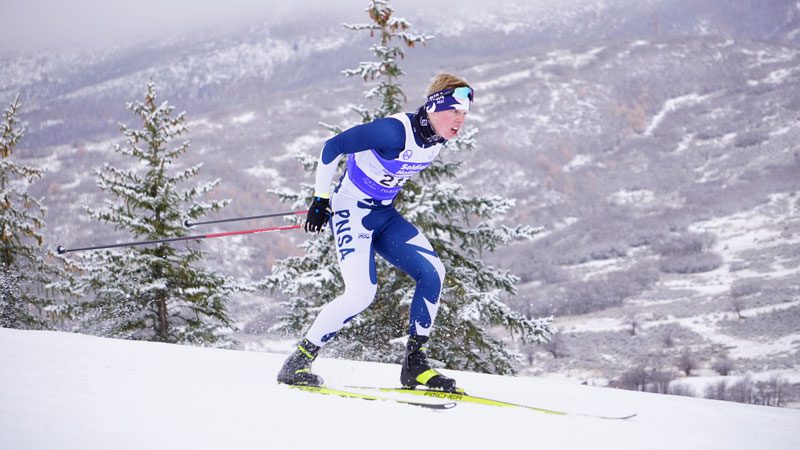
He’s built an impressive resume of ski racing achievements over the years, but he doesn’t dwell on Olympic dreams. He’s focusing on the next step: advancing to a university with the right combination of academics and Nordic racing opportunities. In the meantime, he is training with specific goals in mind: capping off his high school racing career at the US Nationals Race at Soldier Hollow in Utah, the Junior Nationals in Minneapolis and potentially the Nordic Nations Championship in Norway.
Shockey has learned to expect the unexpected in cross-country racing. He lost one race when his pole snapped, and another when the temperature dropped twenty degrees, rendering his ski wax all wrong. But he thrives on the challenge of a sport that demands a trifecta of stamina, technique and a high threshold for pain.
“The person who wins the race is the one who keeps going up that hill when it hurts. You have to believe that the pain doesn’t matter, but the end result does matter. It’s about being the best skier I can be, every day. Maybe that can take me to the Olympic level. But I’m focusing on what I do today,” he said.

